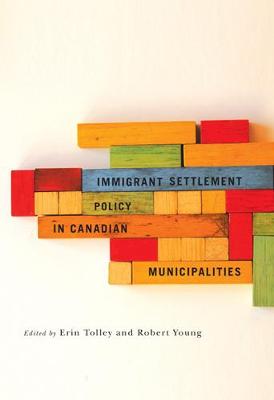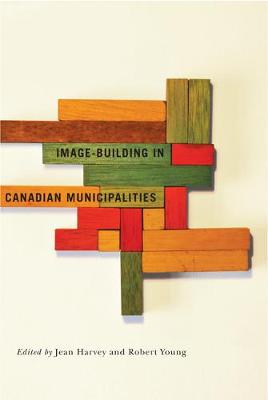Fields of Governance: Policy Making in Canadian Municipalities
3 total works
Immigrant Settlement Policy in Canadian Municipalities
by Erin Tolley and Robert Young
Published 30 June 2011
Drawing on a great many in-depth interviews with government officials and front-line workers, contributors provide a comparative assessment of approaches to immigrant settlement in nineteen Canadian municipalities. This is complemented by a discussion of the federal government's role in this policy field, and by a comprehensive introduction and conclusion, which ground the book historically and thematically, synthesize its key findings, and provide recommendations for addressing the challenges related to intergovernmental cooperation, settlement service delivery, and overall immigrant outcomes. Individual chapters examine the mechanics of public policy-making but also tell a story about diverse and innovative approaches to immigrant settlement in Canada's towns and cities, about gaps and problems in the system, and about the ways in which governments and communities are working together to facilitate integration.
Contributors include Zainab Amery (Carleton University), Caroline Andrew (University of Ottawa), Guy Chiasson (Universite du Quebec en Outaouais), Rodney Haddow (University of Toronto), Rachida Abdourhamane Hima (Government of Canada), Christine Hughes (Carleton University), Serena Kataoka (University of Victoria), Junichiro Koji (University of Ottawa), Warren Magnusson (University of Victoria), Daiva Stasiulis (Carleton University), Erin Tolley (Queen's University), and Robert Young (University of Western Ontario).
Contributors include Zainab Amery (Carleton University), Caroline Andrew (University of Ottawa), Guy Chiasson (Universite du Quebec en Outaouais), Rodney Haddow (University of Toronto), Rachida Abdourhamane Hima (Government of Canada), Christine Hughes (Carleton University), Serena Kataoka (University of Victoria), Junichiro Koji (University of Ottawa), Warren Magnusson (University of Victoria), Daiva Stasiulis (Carleton University), Erin Tolley (Queen's University), and Robert Young (University of Western Ontario).
Image-building in Canadian Municipalities
by Jean Harvey and Robert Young
Published 12 December 2012
Municipal image-building now promotes cities globally, and also to their own citizens. Image-building in Canadian Municipalities explores the decision making processes that determine how cities and towns choose to represent themselves. It also assesses the effectiveness of those processes and of the images themselves. Documenting how image-building policies vary across municipalities and provinces, contributors focus on the interaction between various levels of government and on the involvement and influence of business organizations, heritage associations, environmental groups, and other social forces. Delving into largely unexplored areas of research, with a particular interest in smaller towns and cities, authors show how municipal image-making is often used to advance other policy objectives, and thereby intersects with areas such as culture, economic development, tourism, and immigration. Image-building in Canadian Municipalities shows how municipalities of all sizes are conscious of their images. Thought-provoking and instructive, it provides lessons to policy makers and social interest groups about creating better public policies.
Contributors include Caroline Andrew (University of Ottawa), John C. Lehr (University of Winnipeg), Judy Lynn Richards (University of Prince Edward Island), Cristine de Clercy (University of Western Ontario), Peter Ferguson (University of Western Ontario), and Karla Zubrycki International Institute for Sustainability, Winnipeg).
Contributors include Caroline Andrew (University of Ottawa), John C. Lehr (University of Winnipeg), Judy Lynn Richards (University of Prince Edward Island), Cristine de Clercy (University of Western Ontario), Peter Ferguson (University of Western Ontario), and Karla Zubrycki International Institute for Sustainability, Winnipeg).
Policies forged by all levels of government affect the lives of urban residents. Contributors to this volume explore how intergovernmental relations shape urban policies and how various social forces are involved in - or excluded from - the policy process. Focusing on diverse policy fields including emergency planning, image-building, immigrant settlement, infrastructure, federal property, and urban Aboriginal policy, Sites of Governance presents detailed studies of the largest city in each of Canada's provinces. Drawing on extensive documentary research and hundreds of interviews, contributors offer rich, nuanced analyses and a wealth of policy cases, ranging from preparation for the Vancouver 2010 Olympics to the development of innovative immigrant settlement programming in Winnipeg. Dominant themes include the importance of resources and formal jurisdiction in multilevel policy making, and the struggle for influence between business interests and other social forces. Essential reading for anyone concerned with the quality of urban life in Canada, Sites of Governance offers important insights about how multilevel governance works in Canadian cities.
Contributors include Laurence Bherer (Universite de Montreal), David Bulger (University of Prince Edward Island), Christopher Dunn (Memorial University), Robert Finbow (Dalhousie University), Joseph Garcea (University of Saskatchewan), Pierre Hamel (Universite de Montreal), Martin Horak (University of Western Ontario), Thomas Hutton (University of British Columbia), Christopher Leo (University of Winnipeg), Greg Marquis (University of New Brunswick , Saint John), Byron Miller (University of Calgary), Cecily Pantin (Memorial University), Alan Smart (University of Calgary), Donald Story (University of Saskatchewan), and Robert Young (University of Western Ontario).
Contributors include Laurence Bherer (Universite de Montreal), David Bulger (University of Prince Edward Island), Christopher Dunn (Memorial University), Robert Finbow (Dalhousie University), Joseph Garcea (University of Saskatchewan), Pierre Hamel (Universite de Montreal), Martin Horak (University of Western Ontario), Thomas Hutton (University of British Columbia), Christopher Leo (University of Winnipeg), Greg Marquis (University of New Brunswick , Saint John), Byron Miller (University of Calgary), Cecily Pantin (Memorial University), Alan Smart (University of Calgary), Donald Story (University of Saskatchewan), and Robert Young (University of Western Ontario).


